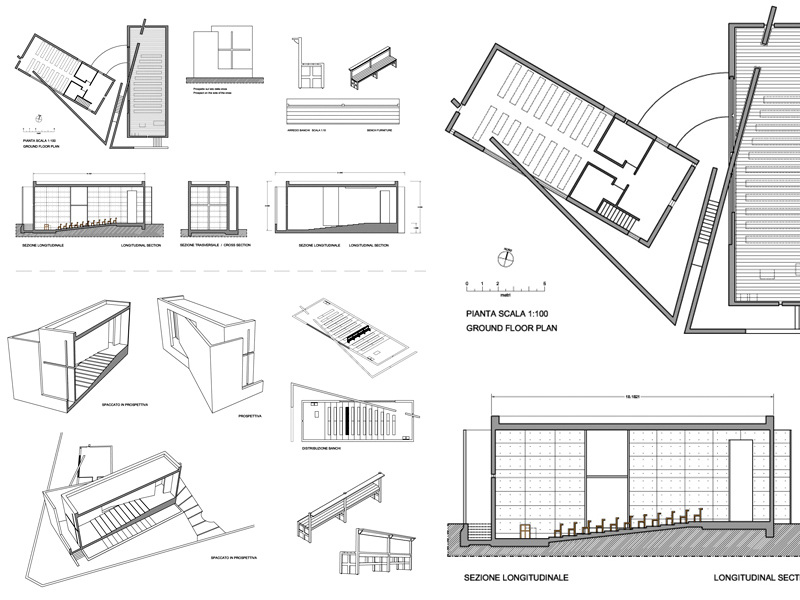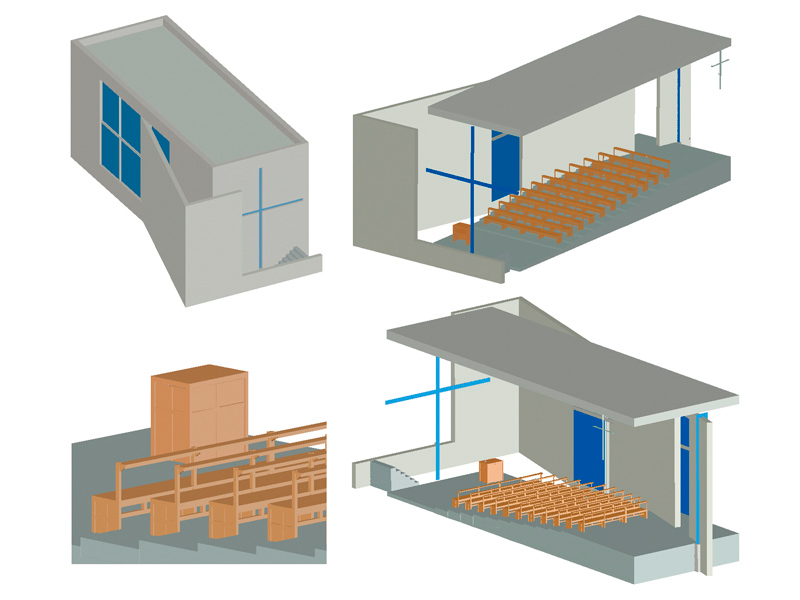Church of light
Tadao Ando – Church of light, Osaka Japan, 1987
Year
1987
Architect
Tadao Ando
In the small town of Ibaraki, 25 km from Osaka, Japan, there is one of the typical architectural works of Tadao Ando, the Church of Light. The Church of Light embraces Ando's philosophical structure between nature and architecture through the way in which light can define and create new spatial perceptions in the same way, if not more, than that of its concrete structures. Completed in 1989, the Church of Light was a renovation of an existing Christian complex in Ibaraki. The new church was the first phase of a complete redesign of the site – subsequently completed in 1999 – under the aesthetics of Ando's design.
For Ando, the Church of Light is an architecture of duality – the dual nature of existence – solid / empty, light / dark, tension / calm. The coexisting differences leave the church devoid of any ornament, creating a pure and unadorned space. The intersection of light and matter increases the awareness of the occupants of the spiritual and secular within themselves.
The use of simple materials reinforces the duality of space; the concrete structure eliminates any distinction of traditional Christian motifs and aesthetics. In addition to an extruded cross with an east-facing facade, the church is composed of a concrete shell; concrete adds to the darkness of the church creating a more humble and meditative place of worship. As evidence of minimalist architecture, the empty crosses on the east wall are the only prominent religious symbol present in the church.
Formally, the Church of the Light of Ando is minimalist and reductive of religious paraphernalia towards a simple cruciform extrusion, which is often criticized as a disturbing, empty and indefinite void. Although it has been claimed that they are nothing more than six walls and a roof, there is a whole level of aesthetic design implemented by Ando and his contractors that is misread and not recognized by the occupants.
As a modern and minimalist structure, the Church of Light emits an architectural purity that is found in the details. The volume of reinforced concrete is devoid of any ornament that is not part of the construction process. The joints and joints of the concrete are built with precision and care by the Japanese carpenters, together with Ando, who worked to create a perfectly smooth surface and carefully aligned joints. So much so that the seams of the concrete formwork align perfectly with the extrusion of crosses on the east side of the church.
The concrete construction is a reinforcement of Ando's main focus on simplicity and minimalist aesthetics; however, the way the concrete is poured and formed gives the concrete a luminous quality when exposed to natural light. Ando's decision to place the cross on the east facade allows the light to pour into the space throughout the morning and towards the day, which has a dematerializing effect on the internal concrete walls that transform the dark volume into an illuminated box. Ando's approach to light and concrete in the Church of Light, as well as his other projects, has a surreal effect that perceptually changes the material into immaterial, dark into light, light into space.
“In all my works, light is an important control factor. I create closed spaces mainly by means of thick concrete walls. The main reason is to create a place for the individual, an area for themselves within society. When the external factors of a city environment require that the wall be free of openings, the interior must be particularly full and satisfactory. "
Tadao Ando
Drawings that can be purchased

16 €

10 €
How the download works?
To download files from Archweb.com there are 4 types of downloads, identified by 4 different colors. Discover the subscriptions
Free
for all
Free
for Archweb users
Subscription
for Premium users
Single purchase
pay 1 and download 1






























































